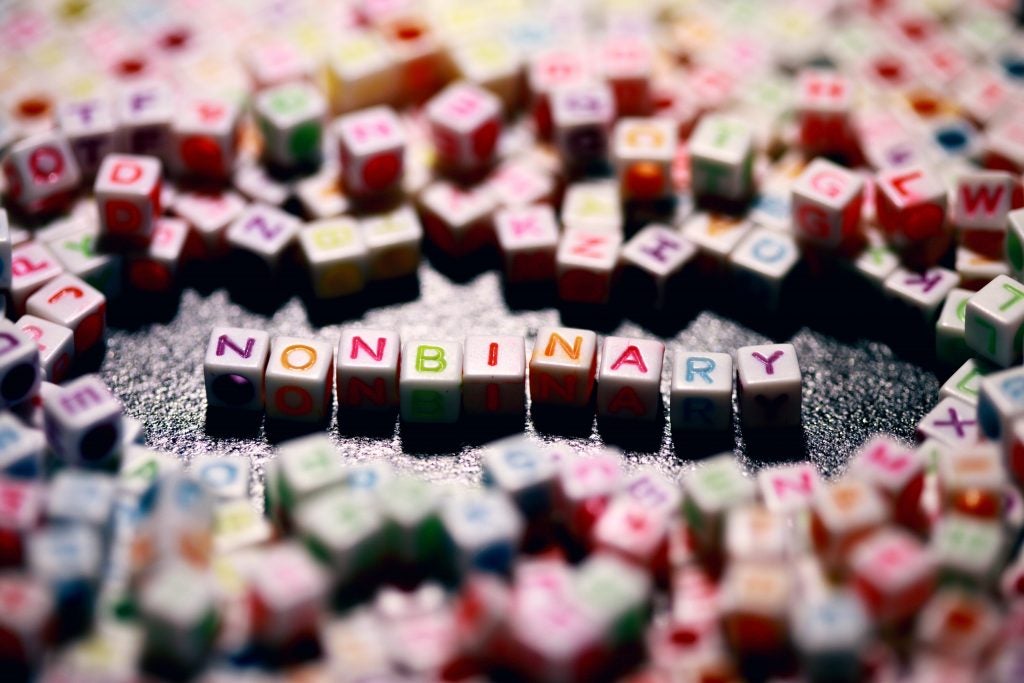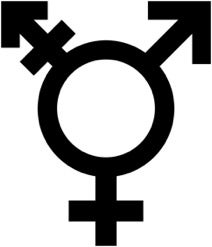
The word “genderqueer” is a term used to describe one whose gender identity does not necessarily fit within the male/female gender binary. Gender identity is an inner sense and experience of one’s gender, whether male-identifying, female-identifying, trans*, or non-binary.1 Though many individuals identify with the male or female labels, others reject this strict gender binary. Some identify with specific labels on the spectrum of gender identity, multiple labels at once, and some do not use terms within the binary to identify themselves at all. Other individuals do not identify with any gender whatsoever. The existence of these individuals challenges the aforementioned gender binary, pushing our current understanding of gender to something which is best expressed as a spectrum. Genderqueer is essentially an umbrella term used in reference to these identities which exist between or beyond the gender binary entirely. 1
Genderqueer identities and gender fluidity in general are not to be confused with androgyny. Androgyny is a term that is more commonly used to describe one’s inclinations towards masculinity and femininity. While some genderqueer individuals embrace androgyny, others choose not to.
Context of the Gender Binary

Historically, individuals are assigned a sex at birth (or prior to birth via ultrasound), typically within the labels of ‘male’ or ‘female.’ This assignment is based solely on one’s external genitalia. Many parents exalt gender throughout their child’s infancy by selecting color-coded clothes—generally pink for girls and blue for boys—or by incorporating gendered phrases like “A’tta boy” to reinforce one’s identity. More recently, gender reveal parties have grown in popularity. During this event, expecting couples make a celebration out of announcing the gender of their child to family and friends. This ultimately creates a rigid categorization of male or female that does not adequately account for the multitudes of gender identity and expressions recognized today. The current consensus is that gender ought to be regarded as a spectrum rather than two distinct identities. 1 Thus, many genderqueer individuals understand gender as a fluid, dynamic part of their identity.
Identity and Culture

Genderqueer individuals are a part of the LGBTQ+ (lesbian, gay, bisexual, transgender, queer, among others) movement. Discrimination against those within the LGBTQ+ community is still widespread. It is difficult for trans* and non-binary individuals to find safe or accepting places; even finding a public restroom can be a trial in certain situations. While legislation to reverse inequality has been passed and many organizations accommodate by having gender-neutral bathrooms, for example, there is much progress to be made on recognizing and providing for trans*, non-binary, and genderqueer individuals.
Furthermore, while some genderqueer, non-binary folk choose to not undergo surgery or take hormones as a means to physically transition, others choose to undergo various procedures. This can include taking hormones, having genitalia altered or removed altogether, or procedures such as top surgery to remove or create breast tissue.3 The choice to undergo any procedure or to physically transition is entirely the choice of the individual.
How to be an Ally
Gender identity is a personal, sensitive topic. In order to be a supportive ally, one can begin replacing the words they use in everyday conversations. A great deal of our language reflects gender in society. Pronouns such as “him” and “her” are often used to indicate the biological sex of an individual. As genderqueer people do not necessarily adhere to one gender or label, it is important to use gender-neutral language. Pronouns and referential language like “one,” “they/them/theirs,” and even “ze/zir” or “hir,” are more inclusive and respect the wide range of gender identities. Rather than Ms. or Mr., genderqueer people may refer to themselves as Mx. Mx is a gender-neutral title that does not specify whether the individual is male or female and remains one of the most inclusive of pronouns. Leaning away from terms such as, “guys,” and towards the phrase, “y’all,” is another way to be more inclusive when addressing a group. It is preferable to ask a person which pronouns they use, if appropriate, when there is uncertainty. Normalization of stating one’s pronouns during introductions will also aid in this effort. Using gender-neutral language creates safe, inclusive spaces and shows the diverse and fluid nature of human gender.
Concluding Remarks

Being a relatively new field of research, information surrounding topics of non-binary gender identities and trans* identities is limited. While the need for empirical investigation of the community remains, one can individually begin their efforts toward affirming their own identity or supporting identities of others in a variety of ways. Society and communities across the world have already begun shifting to include a wider range of gender identities, both in how they respect the interests of genderqueer folk and in the greater cultural paradigm as it concerns gender.
- Richards, Christina, et al. “Non-Binary or Genderqueer Genders.” International Review of Psychiatry, 2017.
- Matsuno, E., Budge, S.L. “Non-binary/Genderqueer Identities: a Critical Review of the Literature.” Curr Sex Health Rep 9, 116–120, 2017.
- Koehler, A., Eyssel, J., Nieder, T.O. “Genders and Individual Treatment Progress in (Non-)Binary Trans Individuals.” The Journal of Sexual Medicine, vol. 15, 2018.
Last updated: 21 February 2020
